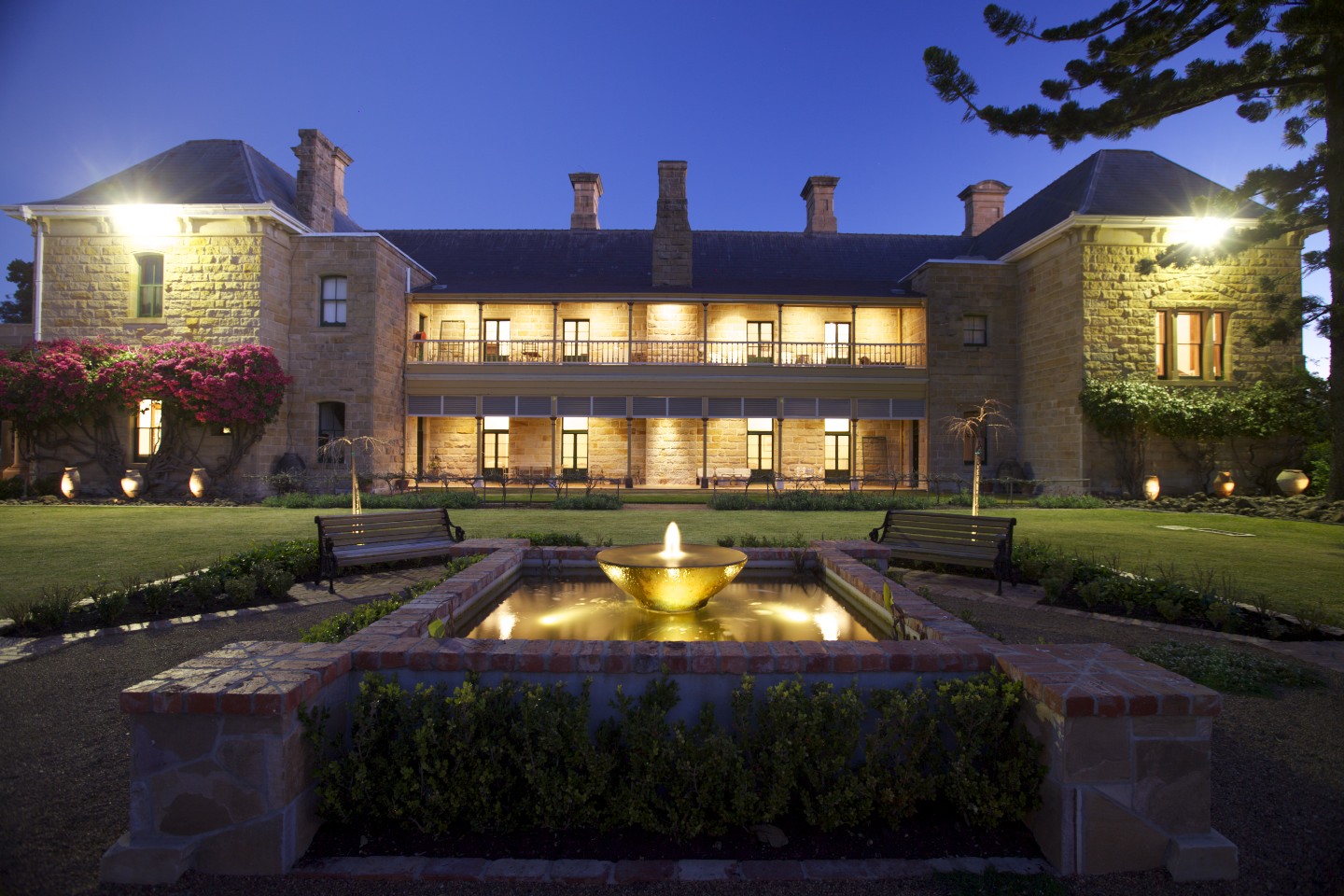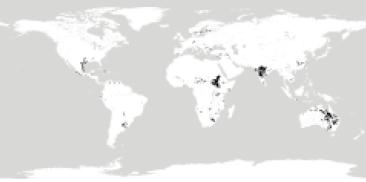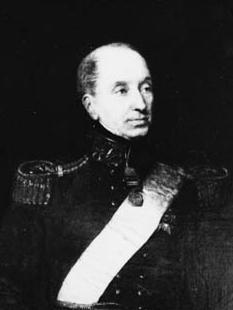|
Darling Downs
The Darling Downs is a farming region on the western slopes of the Great Dividing Range in southern Queensland, Australia. The Downs are to the west of South East Queensland and are one of the major regions of Queensland. The name was generally applied to an area approximating to that of the Condamine River catchment upstream of Condamine, Queensland, Condamine township but is now applied to a wider region comprising the Southern Downs Regional Council, Southern Downs, Western Downs Regional Council, Western Downs, Toowoomba Regional Council, Toowoomba and Goondiwindi Regional Council, Goondiwindi local authority areas. The name Darling Downs was given in 1827 by Allan Cunningham (botanist), Allan Cunningham, the first European explorer to reach the area and recognises the then Governor of New South Wales, Ralph Darling. The region has developed a strong and diverse agricultural industry largely due to the extensive areas of vertosols (cracking clay soils), particularly black ve ... [...More Info...] [...Related Items...] OR: [Wikipedia] [Google] [Baidu] |
Goondiwindi Region
The Goondiwindi Region is a local government area located in the Darling Downs region of Queensland, Australia along the state's border with New South Wales. Established in 2008, it was preceded by three previous local government areas which dated back to the 19th century. It has an estimated operating budget of A$26.1 million. In the , the Goondiwindi Region had a population of 10,310 people. History Prior to the 2008 amalgamation, the Goondiwindi Region existed as three distinct local government areas: * the Town of Goondiwindi; * the Shire of Waggamba; * and the Shire of Inglewood. Inglewood and Waggamba began as two of Queensland's 74 divisions created under the ''Divisional Boards Act 1879'' on 11 November 1879. The Municipality of Goondiwindi was proclaimed under the ''Local Government Act 1878'' on 20 October 1888. They became shires, and a town, respectively on 31 March 1903 under the ''Local Authorities Act 1902''. In July 2007, the Local Government Reform Com ... [...More Info...] [...Related Items...] OR: [Wikipedia] [Google] [Baidu] |
Farm
A farm (also called an agricultural holding) is an area of land that is devoted primarily to agricultural processes with the primary objective of producing food and other crops; it is the basic facility in food production. The name is used for specialized units such as arable farms, vegetable farms, fruit farms, dairy, pig and poultry farms, and land used for the production of natural fiber, biofuel, and other biobased products. It includes ranches, feedlots, orchards, plantations and estates, smallholdings, and hobby farms, and includes the farmhouse and agricultural buildings as well as the land. In modern times, the term has been extended to include such industrial operations as wind farms and fish farms, both of which can operate on land or at sea. There are about 570 million farms in the world, most of which are small and family-operated. Small farms with a land area of fewer than 2 hectares operate on about 12% of the world's agricultural land, and family farms com ... [...More Info...] [...Related Items...] OR: [Wikipedia] [Google] [Baidu] |
Vertosol
A vertisol is a Soil Order in the USDA soil taxonomy and a Reference Soil Group in the World Reference Base for Soil Resources (WRB). It is also defined in many other soil classification systems. In the Australian Soil Classification it is called vertosol. The natural vegetation of vertisols is grassland, savanna, or grassy woodland. The heavy texture and unstable behaviour of the soil makes it difficult for many tree species to grow, and forest is uncommon. Composition Vertisols have a high content of expansive clay minerals (many of them belonging to the montmorillonites) that form deep cracks in drier seasons or years. In a phenomenon known as argillipedoturbation, alternate shrinking and swelling causes ''self-ploughing'', where the soil material consistently mixes itself, causing some vertisols to have an extremely deep A horizon and no B horizon. (A soil with no B horizon is called an ''A/C soil''). This heaving of the underlying material to the surface often creates a ... [...More Info...] [...Related Items...] OR: [Wikipedia] [Google] [Baidu] |
Ralph Darling
General Sir Ralph Darling, GCH (1772 – 2 April 1858) was a British Army officer who served as Governor of New South Wales from 1825 to 1831. His period of governorship was unpopular, with Darling being broadly regarded as a tyrant. He introduced austere policies that resulted in croneyism, prisoner abuse, curtailment of press freedoms, discrimination against emancipists, obstruction of representative government, theatrical entertainment bans and injustices toward Indigenous Australians. During his time as Governor, a significant area of eastern Australia was explored by the British with local geographical features being named after him including the Darling River and the Darling Downs, along with Darling Harbour in Sydney. Early life Born in Ireland around 1772, Ralph Darling was the eldest son of Christopher Darling, an English sergeant, and later military adjutant, in the 45th Regiment of Foot of the British Army. While his father was away on service during the Amer ... [...More Info...] [...Related Items...] OR: [Wikipedia] [Google] [Baidu] |
Governor Of New South Wales
The governor of New South Wales is the representative of the monarch, King Charles III, in the state of New South Wales. In an analogous way to the governor-general of Australia, Governor-General of Australia at the national level, the governors of the Australian states, Governors of the Australian States perform constitutional and ceremonial functions at the state level. The governor is appointed by the monarch on the Advice (constitutional), advice of the Premier of New South Wales, and serves in office for an unfixed period of time—known as serving ''At His Majesty's pleasure''—though five years is the general standard of office term. The current governor is retired judge Margaret Beazley, who succeeded David Hurley on 2 May 2019. The office has its origin in the 18th-century colonial governors of New South Wales upon its settlement in 1788, and is the oldest continuous institution in Australia. The present incarnation of the position emerged with the Federation of Austra ... [...More Info...] [...Related Items...] OR: [Wikipedia] [Google] [Baidu] |
Allan Cunningham (botanist)
Allan Cunningham (13 July 1791 – 27 June 1839) was an English botany, botanist and List of explorers, explorer, primarily known for his expeditions into uncolonised areas of eastern Australia to collect plants and report on the suitability of the land for grazing purposes. Early life Cunningham was born in Wimbledon, London, England, the son of Allan Cunningham (head gardener at Wimbledon Park House), who came from Renfrewshire, Scotland, and his English wife Sarah (née Juson/Jewson née Dicken). Allan Cunningham was educated at a Putney private school, Reverend John Adams (educational writer), John Adams Academy and then went into a solicitor's office (a Lincoln's Inn Conveyancer). He afterwards obtained a position with William Townsend Aiton superintendent of Royal Botanic Gardens, Kew, Kew Gardens, and this brought him in touch with Robert Brown (Scottish botanist from Montrose), Robert Brown and Joseph Banks. Brazil On Banks' recommendation, Cunningham went to ... [...More Info...] [...Related Items...] OR: [Wikipedia] [Google] [Baidu] |
Goondiwindi Regional Council
The Goondiwindi Region is a local government area located in the Darling Downs region of Queensland, Australia along the state's border with New South Wales. Established in 2008, it was preceded by three previous local government areas which dated back to the 19th century. It has an estimated operating budget of A$26.1 million. In the , the Goondiwindi Region had a population of 10,310 people. History Prior to the 2008 amalgamation, the Goondiwindi Region existed as three distinct local government areas: * the Town of Goondiwindi; * the Shire of Waggamba; * and the Shire of Inglewood. Inglewood and Waggamba began as two of Queensland's 74 divisions created under the ''Divisional Boards Act 1879'' on 11 November 1879. The Municipality of Goondiwindi was proclaimed under the ''Local Government Act 1878'' on 20 October 1888. They became shires, and a town, respectively on 31 March 1903 under the ''Local Authorities Act 1902''. In July 2007, the Local Government Reform Com ... [...More Info...] [...Related Items...] OR: [Wikipedia] [Google] [Baidu] |
Toowoomba Regional Council
The Toowoomba Region is a local government area (LGA) on the border of Darling Downs and South East Queensland regions of Queensland, Australia. Established in 2008, the LGA was preceded by several other local government authorities with histories extending back to the early 1900s and beyond. In 2018–2019, it had a A$491 million budget, of which A$316 million is for service delivery and A$175.13 million capital (infrastructure) budget. In the , the Toowoomba Region had a population of 173,204 people. History Prehistory Prior to the 2008 amalgamation, the Toowoomba Region existed as eight distinct local government areas: the City of Toowoomba and the Shires of Cambooya, Clifton, Crows Nest, Jondaryan, Millmerran, Pittsworth, and Rosalie. The City had its beginning in the Toowoomba Municipality which was proclaimed on 24 November 1860 under the ''Municipalities Act 1858'', a piece of New South Wales legislation inherited by Queensland when it became a separate c ... [...More Info...] [...Related Items...] OR: [Wikipedia] [Google] [Baidu] |
Western Downs Regional Council
Western Downs Region is a local government area in Queensland, Australia. The Western Downs Regional Council manages an area of , which is slightly smaller than Switzerland, although with a population of 34,467 in June 2018, it is over 228 times less densely populated. The area is home to prime farming land and thus agriculture is a major industry in the area. Dalby, the biggest town in the region is home to the second largest cattle saleyards in Australia. The Dalby Saleyards process over 200,000 cattle annually in its facility which is comparable to Rockhampton and Casino. The Western Downs Regional Council's Corporate Office is situated at 30 Marble Street, Dalby. In the , the Western Downs Region had a population of 33,843 people. History Baranggum (also known as Barrunggam, Barunggam Parrungoom, Murrumgama) is an Australian Aboriginal language spoken by the Baranggum people. The Baranggum language region includes the landscape within the local government boundaries ... [...More Info...] [...Related Items...] OR: [Wikipedia] [Google] [Baidu] |
Southern Downs Regional Council
The Southern Downs Region is a local government area (LGA) in the Darling Downs region of Queensland, Australia. The region runs along the state's southern boundary with New South Wales and was created in 2008 from a merger of the Shire of Warwick and the Shire of Stanthorpe. As at 2024, it has an area of . In the , the Southern Downs Region had a population of 36,290 people. History The majority of the former Warwick Shire is home to the Githabul people who have lived around this area for tens of thousands of years before the arrival of Europeans in the early 1840s. The current area of the Southern Downs Region existed as two distinct local government areas: * the Shire of Warwick; which in turn consisted of four previous local government areas: ** the City of Warwick; ** the Shire of Allora; ** the Shire of Glengallan; ** the Shire of Rosenthal; * and the Shire of Stanthorpe. The City of Warwick came into being as the Warwick Municipality on 25 May 1861 under the ... [...More Info...] [...Related Items...] OR: [Wikipedia] [Google] [Baidu] |
Condamine, Queensland
Condamine is a rural town and locality in the Western Downs Region, Queensland, Australia. In the , the locality of Condamine had a population of 294 people. Condamine is claimed to be the location of the invention of the Condamine Bell, a small bell made from sheet metal used to locate herds of cattle. Geography The town is north west of the state capital Brisbane and south from the town of Miles, in the Western Downs Region local government area. It is located in the centre of the locality. The Leichhardt Highway traverses the locality from north to south passing through the town, and the Roma-Condamine Road enters from the west. The Condamine River passes to the west of the town. The Roma to Brisbane Pipeline passes to the south of Condamine. There are two gas compression facilities to the east of Condamine. This location is the intersection of the Roma to Brisbane pipeline, the Peat/Scotia Lateral and the Braemar Line Pack Pipeline. History Tieryboo Post Offic ... [...More Info...] [...Related Items...] OR: [Wikipedia] [Google] [Baidu] |
Condamine River
The Condamine River, part of the Balonne catchment that is part of the Murray-Darling Basin, drains the northern portion of the Darling Downs, an area of sub-coastal southern Queensland, Australia. The river is approximately 500 kilometres (310 mi) long and rises on Mount Superbus, South East Queensland's highest peak, on the western slopes of the Great Dividing Range, approximately from the east coast of Queensland, and then flows north west across the Darling Downs, then west.Shaw, John H., ''Collins Australian Encyclopedia'', Collins, Sydney, 1984, The Condamine River is a tributary of the Darling River. Course and features The headwaters of the river rise on the slopes of Mount Superbus, part of the Main Range, before passing through Cambanoora Gorge. The river flows through the towns of , , and Chinchilla and the tributary Gowrie Creek drains the slopes around Toowoomba. At the junction with Dogwood Creek, south of Yuleba, the Condamine turns to the sout ... [...More Info...] [...Related Items...] OR: [Wikipedia] [Google] [Baidu] |






